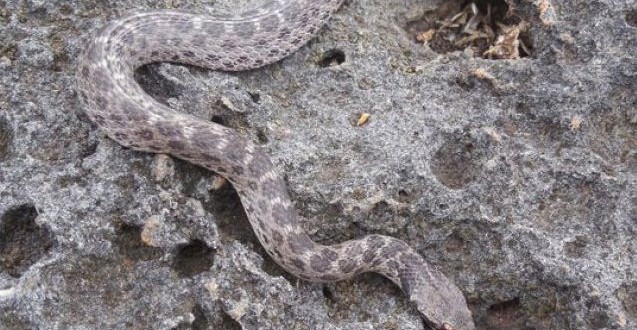A mysterious reptilian species of snake believed to be lost has resurfaced in the volcanic rocks on an island off Mexico, Live Science reported.
First discovered more than 80 years ago on Clarion Island, the elusive, nocturnal Clarion nightsnake was lost after that.
Brownish black in color and sporting spots on its head and neck, it was found again on the Mexican island of Clarion in the Pacific, some 440 miles off the mainland by a researcher at the National Museum of Natural History in the U.S. capital, the institution said in a statement.
“The rediscovery of the Clarion nightsnake is an incredible story of how scientists rely on historical data and museum collections to solve modern-day mysteries about biodiversity in the world we live in,” Mulcahy said.
“Proper identification is the first step toward conserving this snake, and we plan to continue monitoring this species to learn more about the role it plays in the delicate Clarion Island ecosystem.”
Mulcahy — with the collaboration of Juan Martínez-Gómez, an expert on the Revillagigedo Islands — carried out an expedition to Clarion Island where he found 11 snakes that corresponded to the description of the reptile believed to be lost.
DNA tests later confirmed that the snakes belonged to the Clarion Nightsnake species.
“The new snake species is found exclusively on the Mexican island of Clarion and could have remained unknown to science if not for the team’s efforts to solve the case surrounding its disappearance,” the museum said.
“The expedition was made possible thanks to support from Mexico’s navy and with appropriate permits from the country’s natural resources and interior ministries.”
This snake species was first discovered in 1936 by naturalist William Beebe.
Although never declared extinct, it was removed from scientific records after scientists failed to find the specimen for decades.
The Clarion nightsnake lives on black lava rock habitat near the waters of Sulphur Bay and grows to be approximately 18 inches long. The snakes are brownish black and have a characteristic series of darker spots on their head and neck.
This reptile likely originated from the dispersal of an ancestor that traveled by sea from a river basin in Sonora to Clarion.
While current populations of this species appear to be viable, Clarion’s fragile ecosystem is threatened by invasive species such as feral cats on neighboring islands. These cats prey on lizards, which are likely a main food source for the Clarion nightsnake.
Agencies/Canadajournal
 Canada Journal – News of the World Articles and videos to bring you the biggest Canadian news stories from across the country every day
Canada Journal – News of the World Articles and videos to bring you the biggest Canadian news stories from across the country every day



